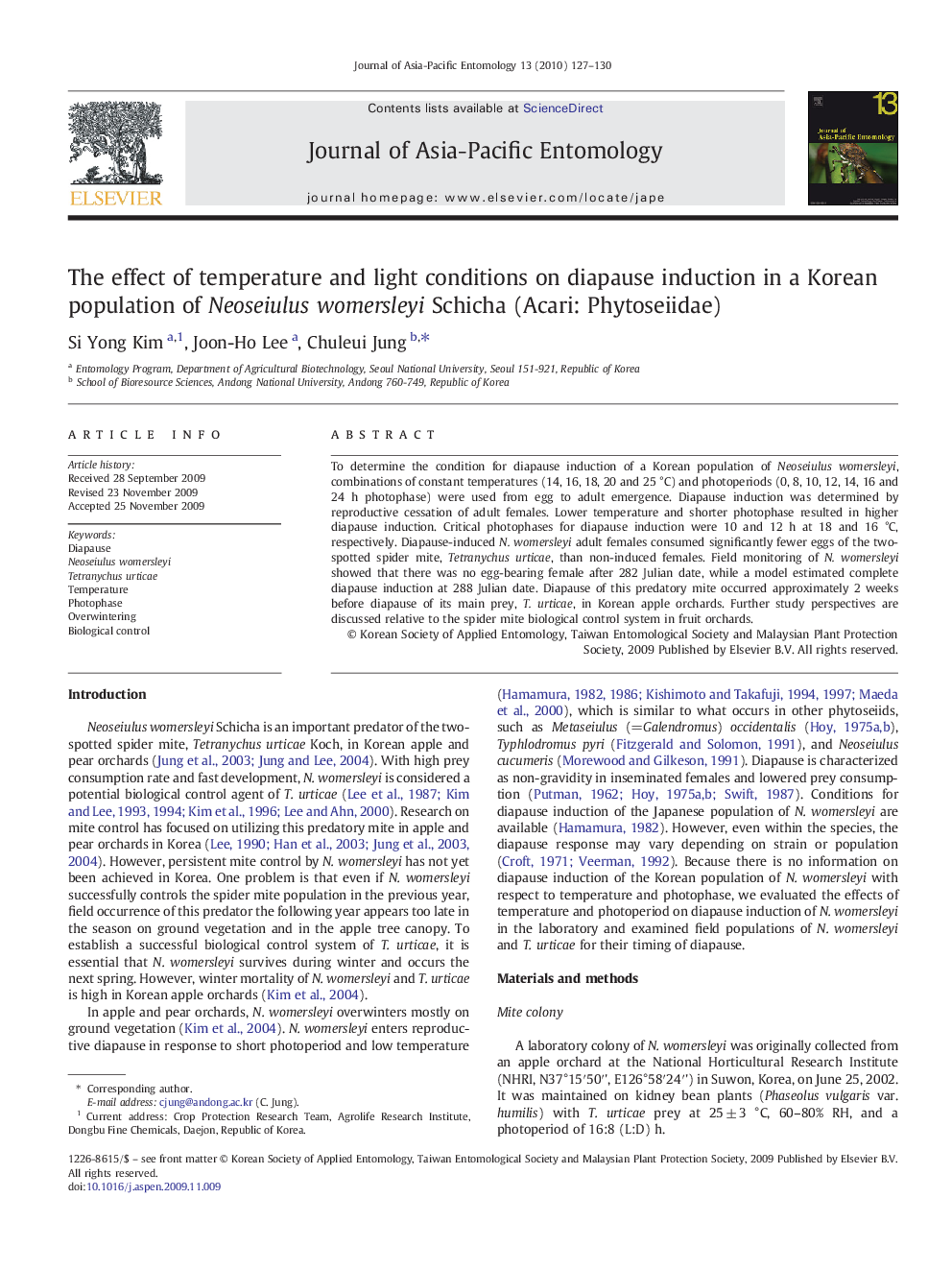| Article ID | Journal | Published Year | Pages | File Type |
|---|---|---|---|---|
| 4524972 | Journal of Asia-Pacific Entomology | 2010 | 4 Pages |
To determine the condition for diapause induction of a Korean population of Neoseiulus womersleyi, combinations of constant temperatures (14, 16, 18, 20 and 25 °C) and photoperiods (0, 8, 10, 12, 14, 16 and 24 h photophase) were used from egg to adult emergence. Diapause induction was determined by reproductive cessation of adult females. Lower temperature and shorter photophase resulted in higher diapause induction. Critical photophases for diapause induction were 10 and 12 h at 18 and 16 °C, respectively. Diapause-induced N. womersleyi adult females consumed significantly fewer eggs of the two-spotted spider mite, Tetranychus urticae, than non-induced females. Field monitoring of N. womersleyi showed that there was no egg-bearing female after 282 Julian date, while a model estimated complete diapause induction at 288 Julian date. Diapause of this predatory mite occurred approximately 2 weeks before diapause of its main prey, T. urticae, in Korean apple orchards. Further study perspectives are discussed relative to the spider mite biological control system in fruit orchards.
